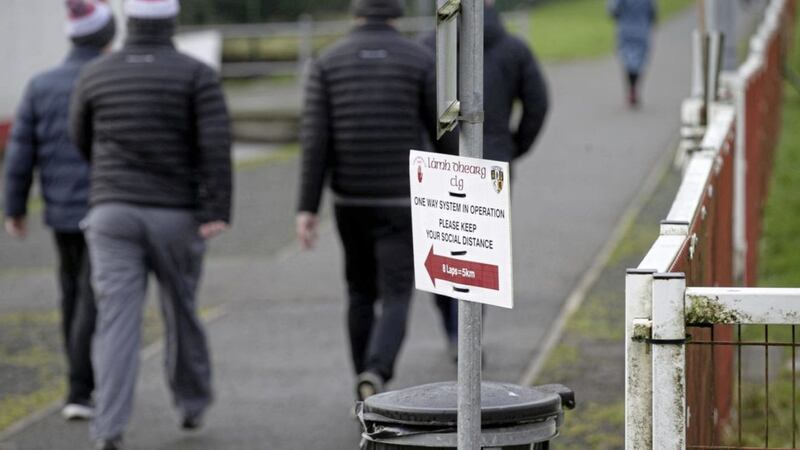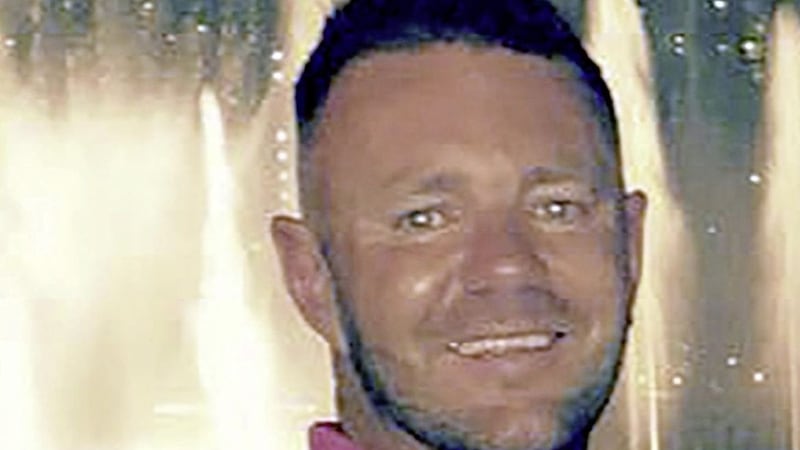THE first GAA club in Ulster was formed in Ballyconnell, Co Cavan in 1885. Soon after, prominent Catholic clerics openly criticised the association for ill-tempered, drunken brawls at games taking place on a Sunday.
Throughout the next 100 years the GAA gradually gained respectability and club numbers in Ulster increased steadily.
Following the establishment of the Northern Ireland state in 1922, the organisation was largely ignored but tolerated by the unionist-controlled Stormont government.
A recent study carried out by the Relatives For Justice (RFJ) victims’ group estimates that 156 people associated with the GAA in Ulster were killed during the Troubles.
Loyalist paramilitaries were responsible for almost half of deaths (46 per cent). while more than a quarter (26 per cent) were by the British army, RUC or UDR. The report found that republicans were responsible for 11 per cent of those killed; some 17 per cent of those were republicans who caused their own deaths accidentally.
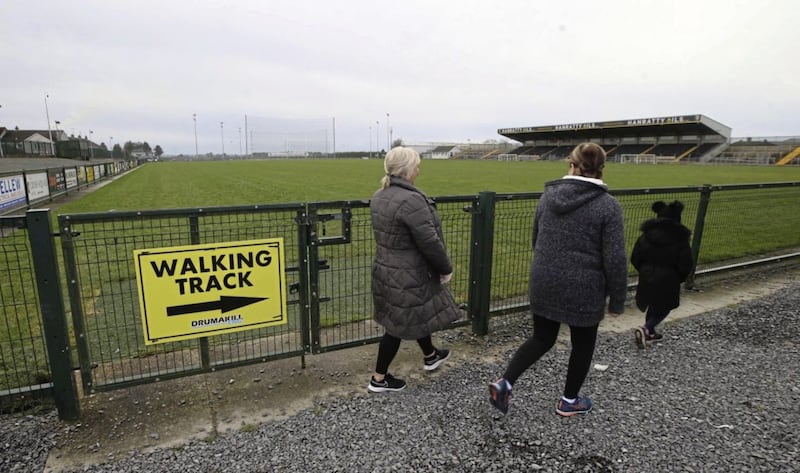
However, the role of the GAA in Ulster has undergone a transformation during the last 25 years following the introduction of power-sharing arrangements at Stormont.
Many of the 370 clubs across Ulster are now seen as the focal point of the community in parishes across the province.
The association in Ulster currently has a 150,000-strong membership, with 90,000 regularly involved in games, administration or volunteering.
Crucially, the GAA also offers a range of non-sporting activities through its clubs aimed at promoting physical and mental health and wellbeing.
During the Covid pandemic it provided hundreds of members to work as volunteers at mass vaccination centres across the north.
Ulster GAA provincial secretary Brian McAvoy says there have been significant changes in the activities of the association over recent decades.
He says this has led to the organisation now playing a key role in delivering major government projects to communities across Northern Ireland who would otherwise have remained disconnected.
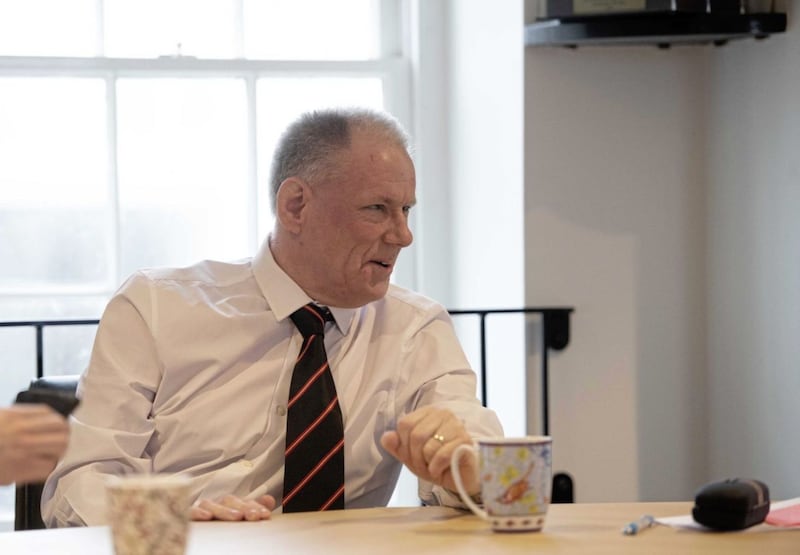
“The GAA was always a community organisation but over the last 50 years GAA clubs have diversified,” he said.
“In rural Ireland particularly, the GAA club is very much the hub of the community.”
Mr McAvoy, who has led the GAA in Ulster since 2017, says its role has evolved far beyond the traditional promotion of football and hurling sports.
“In a lot of GAA clubs now you will see walking tracks, fitness and nutrition classes and things like mother and toddler units. GAA clubs have diversified massively and their facilities are at the disposal of their communities as opposed to just being used by the local football or hurling team. That is part and parcel of our community ethos.
“We are much better equipped now. Every club has a health and wellbeing officer. That wouldn’t have been in place 30 years ago. Our dynamics have changed to reflect changes in society.”
Lámh Dhearg GAA club on the outskirts of west Belfast built a walking track around its sporting facilities in 2015.
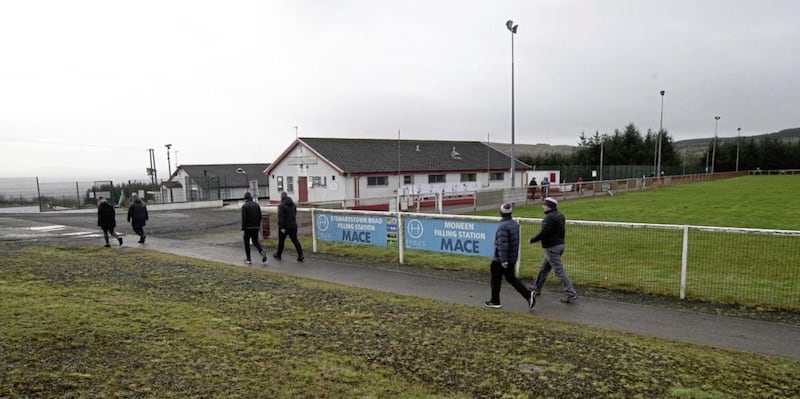
"The walking track has been an absolute godsend during Covid, not only for our sports people but also for the wider Hannahstown community," says club chairman Peter Kane.
"The track is used by everyone in the local area. We have introduced facilities like a coffee dock. It means parents and younger people can enjoy a cuppa and a chat while they can watch them socialise and exercise in safety."
As well as being used by local 'Couch to 5K' runners, the Lámh Dhearg club has added a wildflower meadow and planted hundreds of trees along the boundary of the track.
"During the darker winter months we have our 'Hannahstown Lights Up' floodlight project so that the local community can make best use of the track and our other facilities in brightness.
"All this was developed in partnership with Hannahstown Community Association.
"It is our way of giving back. The GAA is the community and the community is the GAA."
Mr McAvoy says the association's engagement with government departments changed dramatically with the establishment of devolved institutions following the Good Friday Agreement.
“It made things local… there were (Stormont) assembly members who were either members of the GAA or who had an interest in the work of the association.
“They were able to bring a voice to the table that had previously either not been there or certainly hadn't not been there in the same numbers before. One or two voices in Westminster wasn’t going to carry the same sway as 20-odd voices at Stormont.
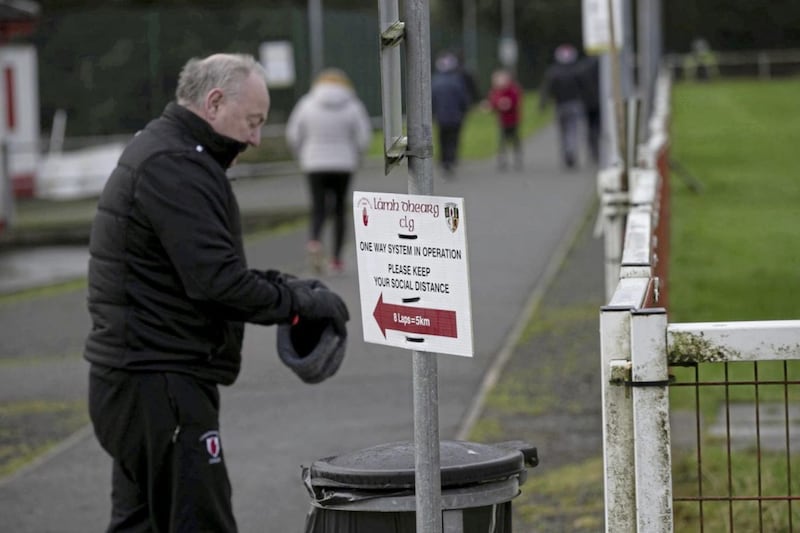
“We now work with every shade of political opinion at Stormont.”
He says it is the GAA’s willingness to build strong partnerships with statutory agencies and government departments which has led to the most dramatic changes.
“It was always going to happen as a result of devolution. It was a natural progression. We work with all sections of government. Some of our staff are funded by government departments.”
Crucially, the Ulster secretary believes that the GAA, along with other sports, now plays a key role in helping to reach disadvantaged and disengaged communities.
“We do see ourselves as delivery partners for government in the execution of programmes for government, north and south.
“We can get to communities that government otherwise couldn't reach.
“Because we have a lot of rural clubs we can get to what government would sometimes regard as hard-to-reach audiences.”
Mr McAvoy points to the significant role played by the GAA in helping to respond to the Covid pandemic.
“Our staff took part in regular meetings with the Stormont executive during Covid, not just to do with sport, but in relation to the wider issues. We offered whatever facilities and support we could.
“Ulster GAA, along with Volunteer NI and the Red Cross, was very much to the forefront in terms of volunteering at the Covid mass vaccination centres. We had volunteers working at centres in Omagh, Enniskillen, Craigavon and Derry."
He said he was “immensely proud” of clubs' overall response to the Covid crisis.
“They really did stand up to the mark. It was a total community effort and that is where the existence of our GAA community base worked to our advantage.
“Instead of running a GAA team we were suddenly assembling food hampers or working with the local pharmacist in terms of medication for some of the most vulnerable people in the community.
“Our role changed but our commitment to the club didn’t change. If anything, it was galvanised.
“In a lot of communities, rural and urban, the club was the go-to point of contact for people."
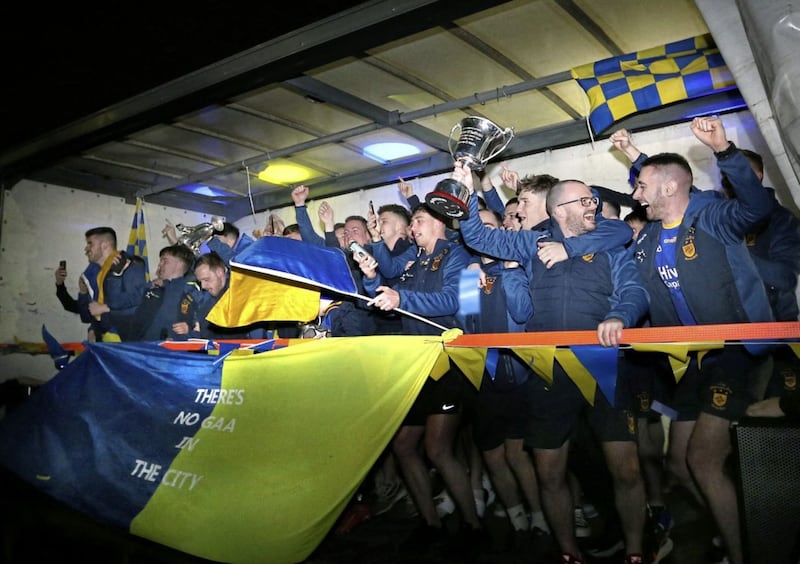
In March 2021 GAA clubs across Ulster received £7.3m funding from Sports NI to help cope with financial losses from Covid.
Ulster GAA is understood to have received an estimated £600,000 in statutory funding last year to fund a number of posts.
Mr McAvoy dismisses suggestions that the involvement of amateur sporting organisations in delivering government projects can potentially allow statutory agencies to avoid ultimate responsibility for providing properly funded resources.
“I just don’t see it that way. I would rather see it that we are complementing and assisting government. I don’t think it’s a matter of it not being our job.
“There may be times when we are unable to help, depending on the resources or what is being asked of us, but by and large we try to accommodate where we can and that is the way it should be.”
A 2020 audit of Ulster clubs showed that only 7 per cent of members come from a non-traditional GAA background, with 4 per cent coming from the Protestant community and 3 per cent of members registering as being non-religious.
The provincial secretary accepts more work needs to be done to attract people from non-traditional GAA backgrounds.
He highlights efforts to promote GAA games in integrated education as a key target.
“We aren’t going to change things overnight but we are now going into schools which we had never been into before.”
He also cites the formation of a new GAA club in predominantly unionist east Belfast in 2020 as a positive sign that the association is succeeding in building new relationships beyond its traditional base.
“If you’d told me five years ago that there would be a GAA club in east Belfast I would have asked what planet you were on. But it just shows how things progress. Things move in the right direction for the positive benefit of greater society.”
Mr McAvoy praised the east Belfast club for its efforts to encourage people in that part of the city to embrace the sport.
“They started from scratch and were able to attract people who would previously have had no prior involvement with Gaelic games on any level.
“The big issue for us is to work with the club because they have no base and to try to secure faculties for them. Ultimately they need somewhere they can call home and that is what we are working towards. Unfortunately, that doesn’t happen overnight but it is a work in progress.”
He also accepts that the GAA has more to do to promote membership of the organisation within the disabled and BAME (Black, Asian and Minority Ethnic) communities.
Only 3 per cent of GAA members come from the disabled community while 2 per cent are from ethnic minorities.
"A large part of our work programme is working with people with disabilities. We were recognised last year by Disability NI for some of the work the association has done, but it is a work in progress. We have a lot more to do.”
The senior official expressed concerns that future population shifts from western counties may have an adverse impact not only on local clubs but also on larger villages and towns.
"We have to be concerned about the shift in demographics, particularly the west to east migration shift.
“You only have to draw a line from north Antrim down through the country and ask yourself where all your big population cities are located; Belfast, Lisburn, Newry right all down the eastern seaboard. Newry is now within commuter distance to Dublin.
“It is an area which may in the future mean the amalgamation of clubs in western counties.
“It is something which I think will become more of a focus in the next 20 years.”
Insisting that the amateur ethos and volunteering would remain central planks of the GAA in Ulster over the next 25 years, Mr McAvoy added: “Why wouldn’t we do it? We are a community organisation.
“Why wouldn’t we do anything which is going to benefit communities. That is the way we look on it. Doing things right, doing things well, it’s just a natural progression.
“Amateurism and volunteering are the two fundamental cornerstones of the GAA.
“It is what makes us what we are. If you do away with them, you do away with our entire fabric.”
:::::::
ULSTER GAA BY NUMBERS
There are 370 GAA clubs throughout the nine counties of Ulster with an overall membership of 150,000.
Tyrone is the largest GAA county with 49 clubs and more than 19,000 members. While Antrim has the same number of clubs, it has around 16,000 members.
Down has 47 clubs and a total membership of just under 19,000, while Armagh has 45 clubs and almost 15,000 GAA members.
Derry has 39 clubs and just under 15,000 members and while Donegal has only 37 clubs, they have a combined membership of 17,880.
Cavan has 35 clubs with membership totalling 11,7000, Monaghan has 29 clubs and around 9,250 members, while Fermanagh has the smallest number of clubs, just 20, with only 6,500 members.
Across Ulster there are an estimated 90,000 members active in either playing, administration or volunteering for their clubs. An estimated three-quarters of participants are under 18.
There are understood to be 25,000 volunteers within the amateur association.
A 2020 audit of Ulster GAA carried out by Sheffield Hallam University found that the average club has 345 members, 244 of whom are active participants.
A breakdown of club membership reveals that 7% come from a non-traditional GAA background, with 4% coming from the Protestant community and 3% of members registering as being non-religious.
Only 3% of GAA members come from the disabled community while 2% comes from the BAME community.
Individually Ulster clubs have an average of 59 volunteers. The majority of these are white, male and Catholic. Three-quarters of volunteers are aged between 25 and 64 years old. Only 5% of volunteers are from a non-Catholic background, with only 6% coming from the disabled or BAME communities.
The audit revealed that the average Ulster club generated an annual income of €111,500, spending an estimated €104,500 resulting an average surplus of €7,000.
GAA clubs have a much higher rate of facility ownership than clubs in other sports. Almost 90% of GAA clubs stated that they owned their home ground.
However, almost three-quarters stated that they also used publicly-owned sports facilities, for which the majority are required to pay a fee.
In Co Antrim almost 30 per cent of clubs do not own the facilities at which they play or train, and all bar one of the clubs in the county uses public facilities, for which 90 per cent are required to pay.
::::::
ULSTER'S BIGGEST CLUBS
The growth of the GAA in urban communities is clearly evidenced in a list of the five largest clubs in Ulster.
The club with the most members last year was Steelstown Brian Og's in Derry with almost 1,750.
The newly-crowned All-Ireland Intermediate Club Football champions did not exist until 1987, when it was set up by some people who had played GAA in the county but moved to the city, including two-time All Star Anthony McGurk from Lavey.
Two clubs in south Belfast - Carryduff and Bredagh - are the second and third largest in Ulster with respectively, with each having around 1,000 members. Both were formed in 1971.
St Eunan's in Letterkenny is the fourth largest club in Ulster with just under 1,000 members.
The fifth largest is another club from south Belfast, St Brigid's GAC, which was established as recently as 1998 to meet huge demand for GAA in the Malone Road area, its founders again being drawn from many other parts of Ulster.
